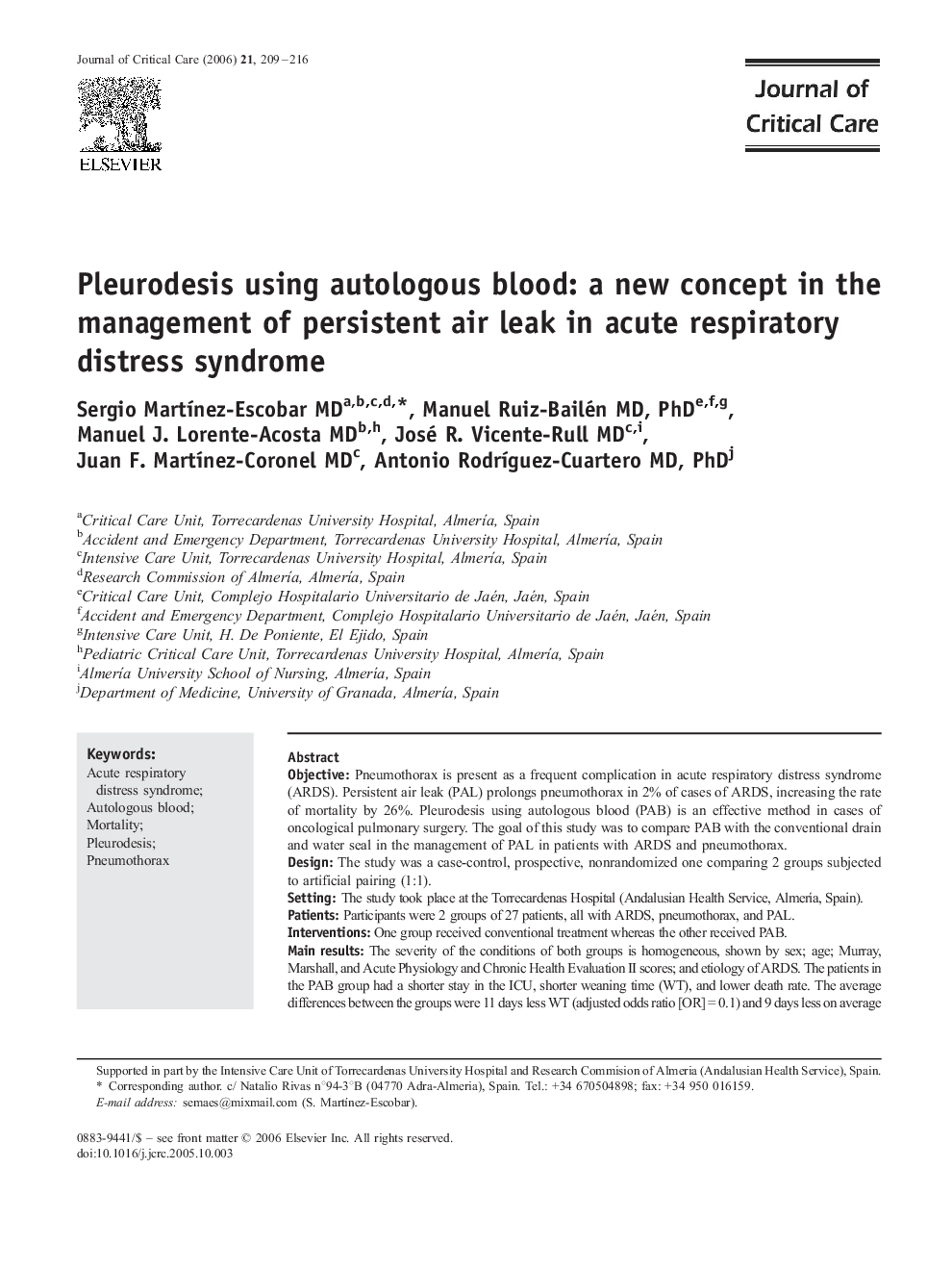| کد مقاله | کد نشریه | سال انتشار | مقاله انگلیسی | نسخه تمام متن |
|---|---|---|---|---|
| 2765350 | 1150961 | 2006 | 8 صفحه PDF | دانلود رایگان |

ObjectivePneumothorax is present as a frequent complication in acute respiratory distress syndrome (ARDS). Persistent air leak (PAL) prolongs pneumothorax in 2% of cases of ARDS, increasing the rate of mortality by 26%. Pleurodesis using autologous blood (PAB) is an effective method in cases of oncological pulmonary surgery. The goal of this study was to compare PAB with the conventional drain and water seal in the management of PAL in patients with ARDS and pneumothorax.DesignThe study was a case-control, prospective, nonrandomized one comparing 2 groups subjected to artificial pairing (1:1).SettingThe study took place at the Torrecardenas Hospital (Andalusian Health Service, Almería, Spain).PatientsParticipants were 2 groups of 27 patients, all with ARDS, pneumothorax, and PAL.InterventionsOne group received conventional treatment whereas the other received PAB.Main resultsThe severity of the conditions of both groups is homogeneous, shown by sex; age; Murray, Marshall, and Acute Physiology and Chronic Health Evaluation II scores; and etiology of ARDS. The patients in the PAB group had a shorter stay in the ICU, shorter weaning time (WT), and lower death rate. The average differences between the groups were 11 days less WT (adjusted odds ratio [OR] = 0.1) and 9 days less on average time spent in the ICU (adjusted OR = 0.24). The death rates in the PAB group and the control group were 3.7% and 29.6%, respectively (adjusted OR = 0.6).ConclusionsThe use of PAB makes possible a decrease in ventilator WT and a shorter stay in the ICU, with a resulting increase in functional recuperation and decrease in patient mortality.
Journal: Journal of Critical Care - Volume 21, Issue 2, June 2006, Pages 209–216